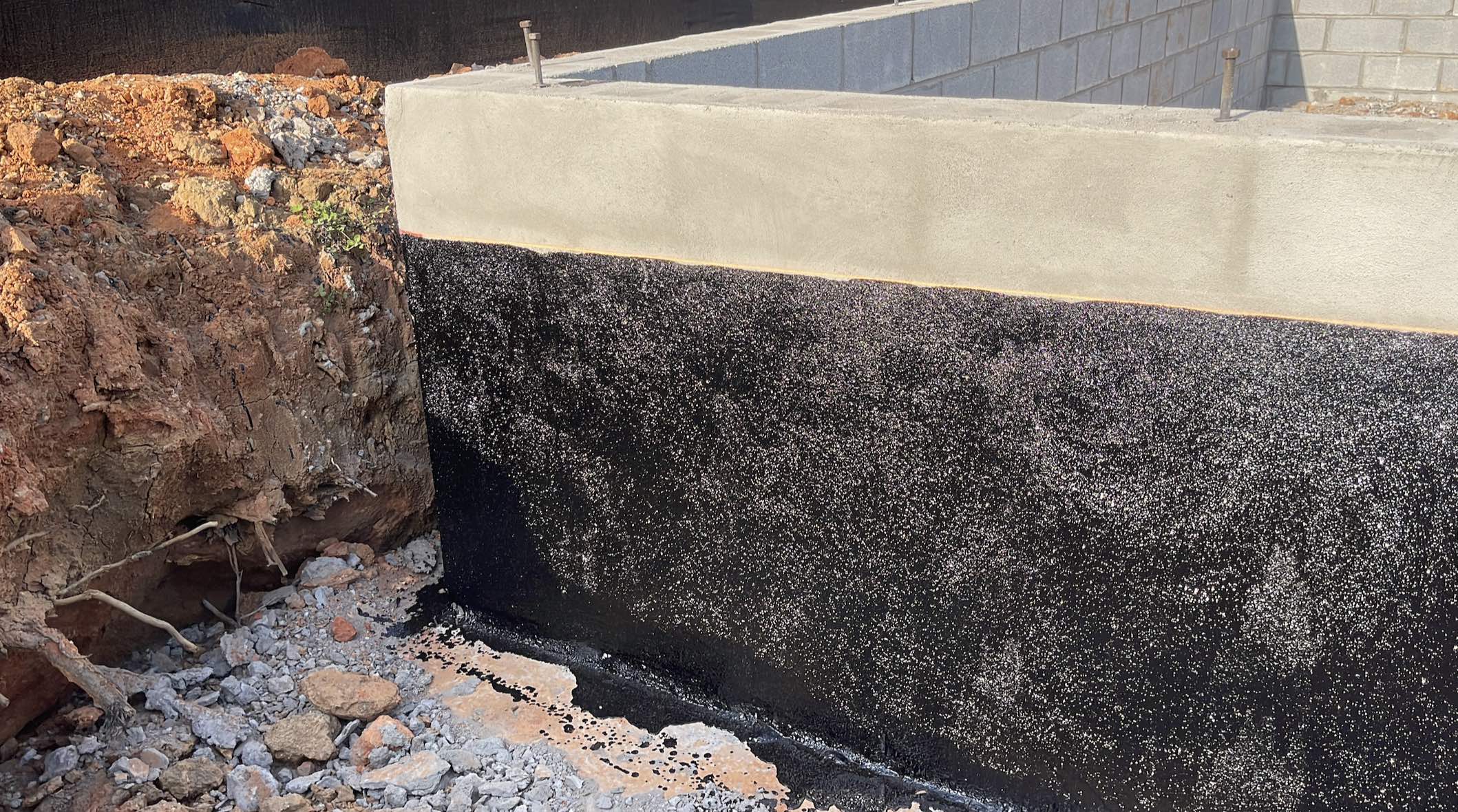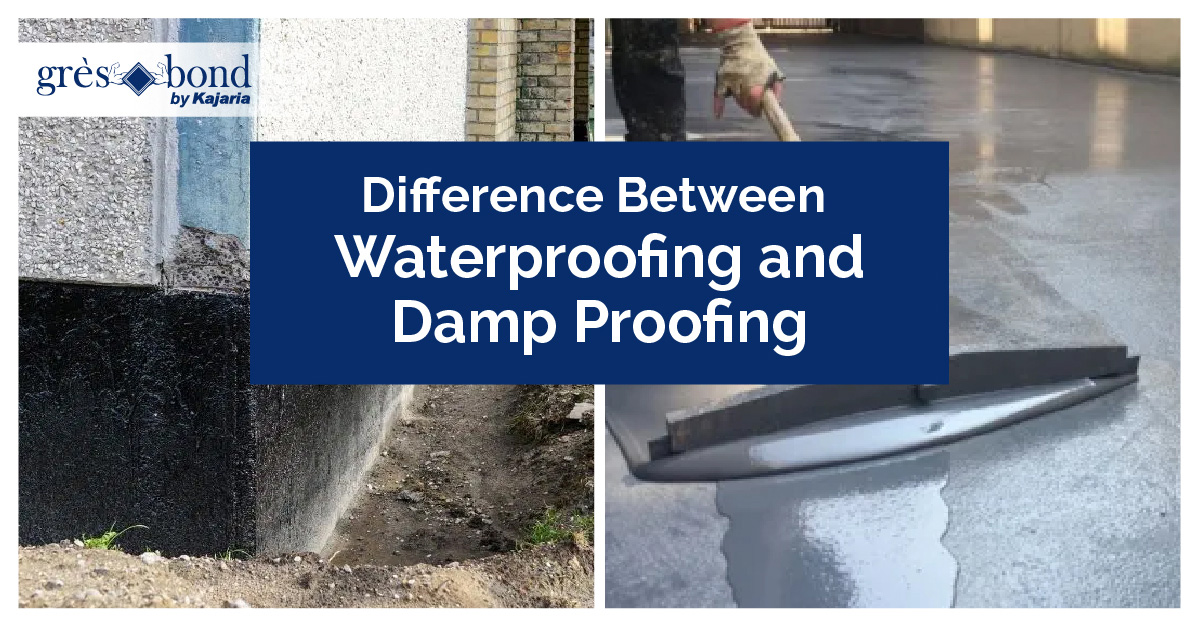Expert insights on dealing with rising damp from damp proofing newcastle
Expert insights on dealing with rising damp from damp proofing newcastle
Blog Article
Exploring the Numerous Methods and Solutions for Effective Damp Proofing
Wetness in structures presents substantial challenges to both structural honesty and indoor air high quality. Various methods and remedies have arised to combat this pervasive concern. From conventional damp-proof membranes to cutting-edge chemical treatments, each technique uses unique advantages. Comprehending these alternatives is necessary for effective moisture control. Picking the ideal remedy depends on details structure problems and demands, triggering more expedition into the most efficient moist proofing methods available.
Understanding the Reasons For Moisture
Wetness can emerge from different sources, recognizing these reasons is essential for reliable remediation. Commonly, wetness stems from 3 main resources: climbing moist, penetrating wet, and condensation. Increasing damp happens when groundwater takes a trip up-wards via porous products, such as block or stone, frequently due to an absence of an effective barrier (damp proofing newcastle). Penetrating moist is usually caused by outside factors, consisting of roof leaks, damaged seamless gutters, or damaged walls, permitting water to infiltrate a home. Condensation, on the various other hand, results from excess moisture in the air, usually exacerbated by inadequate ventilation and temperature distinctions, bring about water droplets developing on surface areas. Recognizing these underlying issues is necessary, as each sort of dampness needs a customized strategy for removal. Proper evaluation assists in establishing one of the most effective services, eventually guarding the structural integrity of a structure and boosting indoor air high quality
Typical Damp-Proof Membrane Layers

Chemical Damp-Proofing Solutions
Chemical damp-proofing services offer an ingenious method to avoiding dampness invasion in buildings. These methods normally include the application of liquid chemicals that penetrate stonework and form an obstacle versus climbing wet. Generally utilized chemicals consist of silanes, siloxanes, and other water-repellent representatives that react with surface area materials to produce a hydrophobic layer.The application process generally requires boring openings into the walls, infusing the chemical solution, and permitting it to cure. This method is specifically beneficial for older structures where typical damp-proof membranes may be unwise. Chemical damp-proofing can be less turbulent and much more affordable than extensive renovation projects.While efficient, these remedies depend on correct application and environmental conditions for peak performance. mould treatment newcastle. Normal upkeep and tracking are vital to guarantee the long life of the damp-proofing therapy. Generally, chemical damp-proofing represents a versatile alternative for safeguarding structures versus moisture-related damage
Cavity Wall Surface Building And Construction Methods
Tooth cavity wall building and construction methods provide numerous benefits, especially in wetness control and power effectiveness. By incorporating an air void between two layers of stonework, these walls effectively reduce water access while boosting insulation. This combination not only shields structures from dampness yet also adds to minimized power usage.
Advantages of Tooth Cavity Wall Surfaces
When considering reliable moist proofing methods, the advantages of dental caries walls attract attention plainly. Cavity walls are composed of two different layers, creating an air space that effectively minimizes dampness infiltration. This layout reduces the threat of dampness, as the outer wall surface acts as an obstacle against rainfall and water access. Additionally, dental caries walls improve thermal insulation, which adds to energy effectiveness by minimizing heat loss. They likewise give sound insulation, assisting to develop a quieter indoor atmosphere. In addition, the air space allows for air flow, which assists in wetness control and reduces the likelihood of mold and mildew development. These advantages not only improve the overall comfort of a structure yet also contribute to its longevity and structural honesty.
Wetness Control Approaches
Effective dampness control approaches are crucial in tooth cavity wall building and construction to ensure long-term defense against wetness. One main technique involves the unification of weep holes, which promote water drainage from the cavity, stopping accumulation. Furthermore, the use of breathable membrane layers can aid handle wetness degrees while enabling entraped vapor to leave. Correct placement of insulation is likewise critical, as it should not block water drainage paths. Making sure that the external leaves of the dental caries wall surface are constructed with water-resistant materials improves total sturdiness. Normal upkeep checks are important to recognize any kind of blockages or damage early, protecting the framework's stability. Inevitably, a mix of these techniques forms a robust defense against wetness breach in dental caries walls.
Insulation and Power Performance
Insulation plays a vital role in enhancing power performance within dental caries wall construction. By incorporating protecting materials, these walls create a thermal barrier that reduces warm loss and minimizes energy consumption. Reliable insulation not just aids keep a steady interior temperature level yet additionally mitigates the risk of wetness, as it protects against condensation within the wall tooth cavity. Various methods, such as using rigid foam boards or mineral woollen, can be utilized to accomplish optimal insulation performance. Additionally, correct setup is necessary to assure that spaces and voids are minimized, which can or else jeopardize energy performance. Ultimately, a well-insulated dental caries wall adds substantially to general sustainability and lowers home heating and cooling prices for home owners.
Outside Damp Proofing Methods
Exterior moist proofing methods are crucial for securing frameworks from dampness seepage. Two reliable methods include the application of water-proof membranes and the installment of French drains. These remedies help alleviate water buildup and maintain the stability of structures.
Waterproof Membrane Application
While different approaches exist for avoiding dampness access, the application of water resistant membrane layers continues to be a highly efficient exterior damp proofing strategy. These membranes are commonly made from materials such as polyethylene, rubber, or customized asphalt, giving a check here robust barrier against water penetration. The setup procedure entails using the membrane layer to the exterior surfaces of walls or foundations, making certain complete protection to avoid leakages. Correct attachment and sealing at joints are vital to taking full advantage of performance. Water-proof membrane layers can be used in numerous forms, including liquid finishings and sheet membrane layers, enabling adaptability based upon the certain needs of the framework. This method not only safeguards buildings from moisture however likewise improves their durability and architectural integrity.
French Drain Installment
One effective approach for taking care of groundwater and preventing dampness buildup around a structure's foundation is the installment of a French drainpipe. This drain system consists of a trench filled with crushed rock and a perforated pipeline that redirects surface area water away from the structure. Appropriate installment calls for cautious preparation, guaranteeing that the drainpipe slopes away from the framework to promote excellent water circulation. Additionally, the location of the drainpipe is crucial; it ought to be positioned in locations prone to pooling or excess dampness. Routine maintenance, consisting of clearing particles from the gravel and ensuring the pipeline continues to be unobstructed, is important for lasting efficiency. Inevitably, a well-installed French drain can substantially minimize the threat of water-related problems in cellars and structures.
Inside Waterproofing Strategies
Inside waterproofing strategies are important for shielding a building's inside from dampness seepage and prospective water damage. These methods commonly involve the application of specific materials and strategies created to create a dampness barrier within the framework. One usual approach is the use of water-proof layers or sealants on wall surfaces and floorings, which prevent moisture from permeating surfaces.Additionally, mounting interior drain systems, such as sump pumps, can properly manage water accumulation in basements and crawl spaces. One more technique includes the use of vapor barriers, which are installed to prevent wetness motion from the ground into living spaces.Moreover, attending to any kind of splits or voids in wall surfaces or foundations with suitable sealants guarantees a detailed defense against water intrusion. By executing these interior waterproofing techniques, building owners can significantly decrease the risk of mold and mildew development, architectural damage, and other moisture-related concerns. Appropriate execution of these techniques is essential for lasting defense and building integrity.
Normal Upkeep and Assessment Practices
Routine maintenance and evaluation techniques are essential for ensuring the long-term performance of moist proofing services in any structure. Routine checks allow homeowner to identify very early indicators of moisture intrusion, such as peeling paint, mold and mildew development, and mildewy smells. These signs can indicate underlying concerns that need prompt attention.Inspections must be conducted a minimum of yearly, concentrating on susceptible locations like cellars, crawl rooms, and outside walls. Throughout these evaluations, residential property owners should check out sealants, drain systems, and air flow to verify they operate correctly.Additionally, maintaining downspouts and gutters is necessary, as clogged systems can cause water buildup near the foundation. Applying a regular maintenance timetable, along with prompt fixings, can considerably prolong the life-span of damp proofing procedures and protect the structural honesty of the building. Aggressive measures ultimately contribute to the general health and wellness of the living environment.
Frequently Asked Concerns
The Length Of Time Does Damp Proofing Usually Last?
The period of moist proofing efficiency differs, commonly lasting in between 20 to half a century. Variables such as application quality, environmental problems, and maintenance methods greatly influence the long life of the wet proofing therapy.

Can I Damp Evidence My Home Myself?
The individual contemplated the feasibility of DIY damp proofing. With appropriate research and the best materials, it is possible. However, they also recognized the importance of professional advice to assure durable performance and stop future concerns.
What Are the Signs of Inadequate Damp Proofing?
Indicators of inadequate moist proofing include persistent stuffy smells, visible mold development, peeling paint, damp spots on walls, and wood decay - damp specialist newcastle. House owners ought to address these problems immediately to avoid more damage and health worries
Does Damp Proofing Affect Indoor Air Quality?

Just How Much Does Professional Damp Proofing Expense?
Professional wet proofing expenses differ considerably, typically varying from $1,000 to $5,000 relying on the residential property's size, the degree of the wet concern, and chosen approaches. Each scenario needs a customized analysis for accurate prices. Generally, dampness originates from three main resources: rising damp, permeating wet, and condensation. When considering efficient wet proofing approaches, the benefits of cavity walls stand out prominently. Outside wet proofing approaches are important for safeguarding frameworks from moisture seepage. While numerous approaches exist for preventing wetness access, the application of water-proof membranes remains a highly effective external wet proofing strategy. Signs of inefficient moist proofing include persistent moldy odors, noticeable mold and mildew development, peeling off paint, moist patches on walls, and wood degeneration.
Report this page